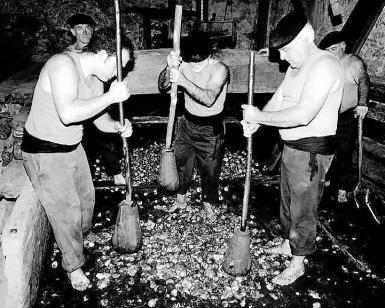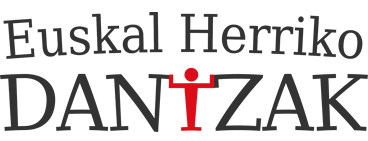Txalaparta
- Josu GOIRI
- 15/ 10/ 2001
The author begins by describing the hits and sound of the instrument. He then goes on to discuss the symbolic origin that it may have, together with its evolution throughout history, the materials that have been used and the current situation.
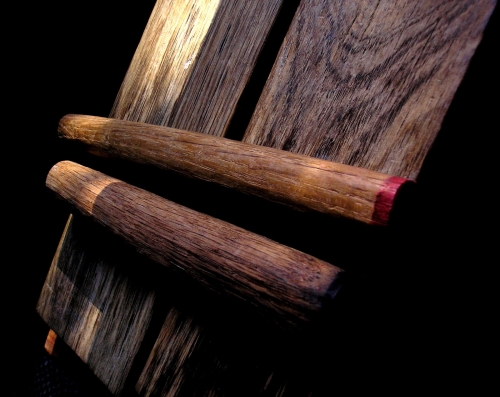
The Txalaparta is a Basque percussion instrument. A board placed horizontally is played by two people, standing opposite each other. The material used is wood. Each of the people playing the instrument, that is to say, the txalapartaris, produce a different rhythm and take it in turns to play. One of the txalapartaris plays the txakun, which involves repeating his onomatopoeia using two hits and repeating this until the end of what is being played, which is called joaldia in Basque. The other rhythm, using two or one hits or not playing, is repeated by the other player in the spaces of time that the first player leaves him to play, the so-called herrena (cojo In Basque).
The two rhythms thus interact between each other and create different combinations as they are played. There is a popular belief about the txalaparta that it was used as a means of communication. We have not been able to corroborate this with the last witnesses that remain (the Zuaznabar and Goikoetxea brothers), but the was surely used to send messages between the mountains.
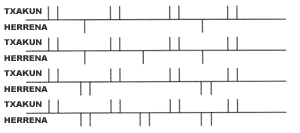
Nonetheless, different calls similar to the ones used for the bells are mentioned. The one described above in the herrena, the so-called call of the cider, played with one hit, with two hits being used to call the people to festivities once the work was finished. Calls regarding fire, death or festivities were also used. The txakun is the balance in the game of hitting, while the cojo tries to move its centre.
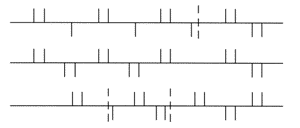
At the end of the section that began with the calls, or some structures, and after playing with the imbalance, a double txakun, that is to say a txakun is also in the herrena, set off like a horse galloping to finish with a irrintzi, a shout similar to neighing. The use of horse noises takes us back to the origin of the txalaparta, to when primitive people drew horses in caves. It was believed that this animal carried the souls of the dead and helped them to rise up. The horn is also played at the start and the end and creates a sound that envelops the people who are listening.
The txalaparta is closely linked to the rural world and, until recently, to the oral tradition where scores were not written down. What was going to be played was sung with txakun onomatopoeia for two hits and txan for one. This spoken register was reproduced afterwards in a board. Tuning gave it its voice and the resonance of the material with the setting.
The txalapartaris gathered the wood to make the board and the makilas (percussion sticks) from the forest. Alder, chestnut, ash and acacia were the woods most used to make a board measuring 2 metres long by 18 cm wide and 7 cm thick. The sticks were made out of ash, oak and beech and measured 55 cm long and 5 cm wide at the lower semi-sphere and 3 cm wide in the upper part.
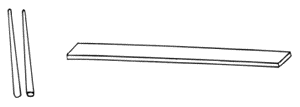
Other materials such as wood from the cherry, the yew or the hazelnut tree were also used, but the aforementioned ones were more usual.
They were few txalapartaris during the 1960s and the Zuaznabar and Goikoetxea brothers were the only ones that continued as an example for the next generation of txalapartalaris. The txalaparta spread from the area of Astigarraga, Andoain and Lasarte throughout Euskal Herria and was mainly brought to Bizkaia by dance groups.
The Bizkai Folklor Elkartea, and the Beti Jai-Alai dance groups and festivals such as the ones organised in Basauri, created the first txalapartaris. Groups, such as Kontraplas in Arrigorriaga, Etsak Etsi in Galdakao, Zugarramurdi in Sestao and Hala Dzipo in Barakaldo, to mention some of them, created a current with many of txalapartalaris that currently play in Bizkaia.
Txalaparta festivals in the Recalde or Santutxu districts of Bilbao, together with the one organised in Sestao, provide the setting for interesting encounters between txalapartaris, although the meeting par excellence is currently the second week of May at the Hernani Txalaparta Festa (Gipuzkoa).
The txalaparta is now to be found in many areas and Kepa Junkera's record, 'Bilbao Hora Cero", has taken its sounds to the furthest corners of the world. The group Oskorri already had used it, together with the drums of Angel Celada.
In this evolution of the txalaparta, the single board that was previously used is accompanied by many others to accompany other instruments, such as the trikitrixa.

Each txalapartari only had a maximum of two hits in the time space when playing the txalaparta in the past. Nowadays, more are used and it is this characteristics and the innovation regarding material (more than one board) that defines the evolution of the modern txalaparta.
The txalaparta has been tuned to be played with other instruments. The old board with many knots, that was impossible to tune, has been replaced with woods without knots, such as the wood brought from the tropics, Elondo, Sapeli, Iroco, etc. Materials, such as metal, have been introduced and taken from other instruments, such as the nozzle. Stone and marble have been introduced as part of the search for the origin of the txalapartaris.
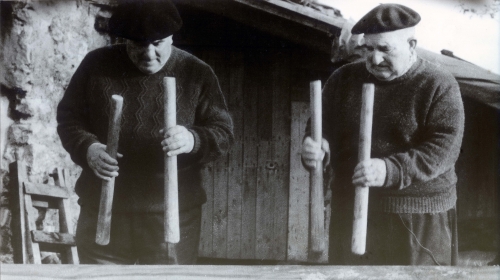
The noisiest setting creates other searches and new uses that enrich an instrument, that brings together the most primitive and most modern when it has been played with an orchestra and other settings where it appears. In the past, the txalaparta was played at cider festivals, San Juan or at funerals. The txalapartaris said that when they are playing these rhythms, they need to created a balanced sway with their bodies. Playing two or less hits puts the side of the body in practice. The percussion is not performed using the wrist as is normal, but is up and down and vice versa, using the arms. It is not strange that one of the rhythms is known as cojo, in this set of balances, where the action, jo or hit (in Basque), denotes a movement of energies which takes place when they play.
The Basque mentality created and creates a series of searches using this simple instrument. The jo or hit opens up a space that becomes this dance of energies between two people, either as a ritual or as just a game. Furthermore, using materials from the surrounding areas allows it to resound with it and bring it into the group.
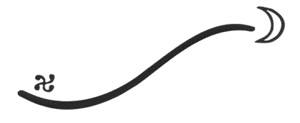
This inner richness gives a deep meaning to what is being played and bring the people playing the instrument into contact with the most sacred part of themselves and of the land. Recently, the txalaparta has spread across borders and has been played in places outside Euskal Herria. We hope that this deeply-rooted instruments will spread its influence throughout the world.
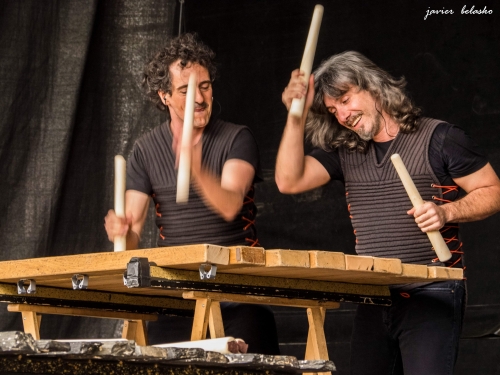
Further information:
- The author's book on the Txalaparta in Spanish, French and Basque.
- Books published by the Hernani Txalaparta School.
- Videos of the Hernani Txalaparta Festa.
